Fortress of Faith / Greenback CastleFloyd "Junior" Banks (1946)
Extant
Greenback, Tennessee, 37742, United States
begun in 1993
Junior is typically present at the site mid-morning and mid-afternoon to dusk and gives tours enthusiastically. Admission is free, but donations are accepted.
About the Artist/Site
Today Floyd Banks values education, but despite his teachers’ best efforts, young Floyd played hooky so often that he was unable to graduate from high school. He became a self-employed landlord and house builder, and while he never formally worked in construction or at a regular job, he has assembled fourteen houses out of scrap materials, teaching himself how to build. In addition to his interest in construction, he has also had an interest in finding and collecting Native American artifacts since childhood, and he makes floral, animal, landscape, word, and abstract patterns by attaching arrowheads to cloth-covered boards, which he frames under glass. Several of his arrowhead designs (and other donations) are on display at the storefront Greenback, Tennessee History Museum.
Banks owned some vacant property about two-tenths of a mile along the dirt road from his modest one-story rusty-roofed house in hilly eastern Tennessee, and, in 1993, at age 46, he began to build a castle on this site. He believed that living in a castle would turn him into a “big shot,” something he desired; improvising as he worked, without “blueprints or diagrams,” he recalls using a “measuring tape” on the (still in-progress) castle perhaps only a dozen times over the past twenty-three years. While Banks once rented out the houses he built, and says he planted 70,000 pine trees on his once extensive land holdings, by now he has “given it all away” (or sold it cheaply) and is “counting [his] change” at the end of every month.
As Banks worked on his castle, a number of buildings were condemned for the widening of nearby Highway 411, and the demolition crews would put aside bricks and other construction scraps so Banks could pick up what he wanted every evening, thus saving them the need to bury as much rubble. Thanks to these surplus materials and also to donations, Banks estimates he has spent less than $2,000 to date on his massive structure. Local suppliers have saved punctured bags of concrete mix for him, and sometimes construction materials just appear anonymously at the castle. Banks has built it all by hand, with some help from a young friend, and has been happy to take advantage of the materials donations of “tourists” (as he calls the thousands of annual visitors who don’t live nearby), to ornament the construction. These contributions have included marbles, stones, and seashells for Banks to fix in the concrete, as well as figurines, glass bottles, and various incidentals for display. Embedded stone and marble arrangements on the castle grounds include carefully placed bas-relief blood-red concrete reproductions of native knives and hatchets. Stones, marbles, saw blades, silverware, and the colored imprints of leaves are among the objects set into castle walkways.
While laying out the courses of the approximately sixteen-foot-high castle walls, Banks used similar color bricks to form long single-row horizontal lines, decorative shapes, and horizontal bands of light and dark. Brick curtain walls connect six cinder block mural towers to form an L-shaped open-castle plan. Three large concrete-filled arched openings in the brickwork display embedded rocks, tiles, marbles, and cast iron artifacts. Pressed-in marbles also embellish about a dozen small square openings, filled with crosses in concrete relief. Numerous small tapered cylindrical tower protrusions, resembling defensive barbs, bear the Solo™ imprint of their plastic cup molds. Inside, some twenty mostly open-air themed rooms line the castle walls; these include a three-seated brick throne room (designed both for the Holy Trinity as well as for his brother, his brother’s wife, and their son, who were all killed in two separate automobile accidents months apart); a game room with two concrete seats and a concrete table on which is placed a marble chess board made by Banks’ deceased brother; and an enclosed torture chamber (implements hanging, demons watching from the wall). Square concrete bricks displaying the incised names of past visitors form the walls of another room (he no longer puts out a jar and paper for visitors wanting to have their names engraved into the castle walls, possibly because he tired of doing so but also possibly because he ran out of space). Outside the interior rooms, about twenty-five dogs lie buried under handmade concrete grave markers in a pet cemetery next to a row of grapevines: in additions to strays he himself has taken in, visitors may ask to bury the remains of their own animals, and Banks provides the headstones.
In one of the roof-covered castle rooms a four-page letter diagramming Banks’ scientific observations on patterns of bird migration is on display, along with return letters from various officials on his migration theory, as well as on such other topics as his discovery of an equation for gravity and reports of miraculous occurrences at the castle. On the front of the castle, two large open cabinets display newspaper and magazine articles on the project, along with letters Banks has sent to periodical editors on bird migration, dinosaur extinction, and advice for living a Christian life. A page from the local paper includes an ad “Paid for by Junior Banks” with a photograph of the castle and the text“On November 4, 2008 Ask for Write-In Ballot Vote Junior “Castleman” Banks For U.S. President,” along with an AP update article on the 2008 Presidential election. Perhaps most importantly for Banks, the display features a photograph taken by David Jones, a Tennessee state employee on an official castle visit. It shows the golden rays of a sun flare, which Banks has interpreted as the Holy Ghost emanating from one of the arched wall openings, casting a pool of “candlelight” on the ground. Here Banks sees “evil looking good” before being revealed for what it is and vanquished into a skull, which has also been illuminated.
In 2003, Banks began to realize that images were embedded in the concrete textures throughout the castle. In what had seemed to be the accidental surface trace of concrete application, he saw—or visitors would point out—faces, beasts and demons. Often presenting allegories about family, historical, or biblical figures, Banks is convinced that the castle reveals fifty-nine messages from God, and, thanks to this, he believes that “when you leave this building you will know that there is an Almighty.” He acknowledges that the simple line drawings (“like cartoons—not real good,” he concedes) featuring ancient Egyptian figures and pop culture characters incised into the wet concrete are by his hand, but denies that he had any input into the textural imagery that went unnoticed, for a decade, in plain sight. Since written messages are limited to a single language, Banks observes, it only makes sense that God would speak through universally-recognizable symbols. Once revealed to him, Banks outlines the figures with black paint; the effect is that the castle appears to have a collection of reverse silhouette paintings on scattered display throughout its interior and exterior walls. Jesus, the Devil and other demons, an Indian Chief, Daniel sharing the eye of a Lion, a buzzard, his brother and family, and the artist himself are among the message-bearing apparitions that have been exposed on the surface.
Banks now believes “the Big Guy” used his initial ego-driven motivation to build a castle for his own edification in order to get him started, and that over time he has revealed to Banks his true purpose: to build the new temple, as required by prophecy, for the Second Coming. The temple cannot be built in Jerusalem “without starting World War III,” however, and Banks is quite sure his Fortress of Faith is directly opposite Israel on the globe. But he explains, “if you’re building a house for the Almighty, the other guy’s gonna take a bad lick at you—they are two forces—there’s no doubt about that.” Banks was not too surprised, therefore, when “an image came up on a wall of Satan whispering into my ear,” and he understood the message to be, “if you don’t stop building this building, old man, I’m gonna hurt you.” He told the “other guy,” to “go ahead and give me your best shot,” but shortly after that he was hospitalized with heart problems, and doctors initially told the family his chances of surviving were slim. However, after six months of wheelchair-bound recovery, he is back on the job (under orders to minimize strenuous activity and to maintain a strict medicine regimen). Unvanquished, however, the “other guy” has not given up: in spring 2015, Banks and I were attempting a video interview in front of the castle, but a usually quiet neighbor’s dog wouldn’t stop barking, and the artist’s genial manner turned serious, as he interpreted this as the Devil working to thwart our efforts. In spite and in defiance of all the opposing forces, Banks cheerfully works daily on the castle during shady hours, and currently he and his young helper Douglas Freeman are building a whiskey bottle-filled concrete arch in order to “take something bad [and] make something good out of it.” The mostly clear glass bottle bottoms are flush with the concrete, but single rows of blue and green bottles extend several inches out from the surface and cast the colored shadows of stained glass.
Despite being afflicted with severe heart problems, and perhaps animated by important affairs not accessible to the rest of us, Floyd Banks maintains a lively, almost giddy and childlike demeanor as he greets and guides “tourists” around the site, although hand-painted signs warn that he is not liable for injuries. Junior, as he prefers to be called, welcomes visitors during all daylight hours; he says he gets so many now that his next project is to add a restroom to his unplumbed castle.
~Fred Scruton
Contributors
Materials
salvaged materials
Map & Site Information
Greenback, Tennessee, 37742
us
Latitude/Longitude: 35.6611904 / -84.1721357
Nearby Environments


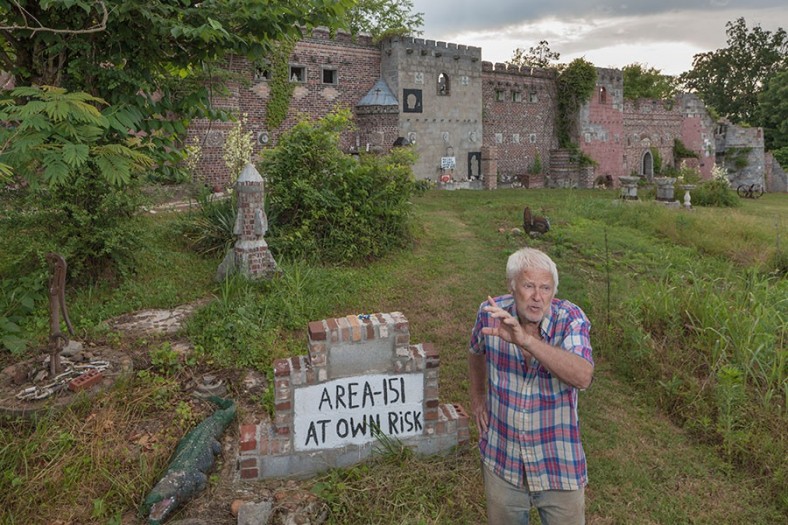
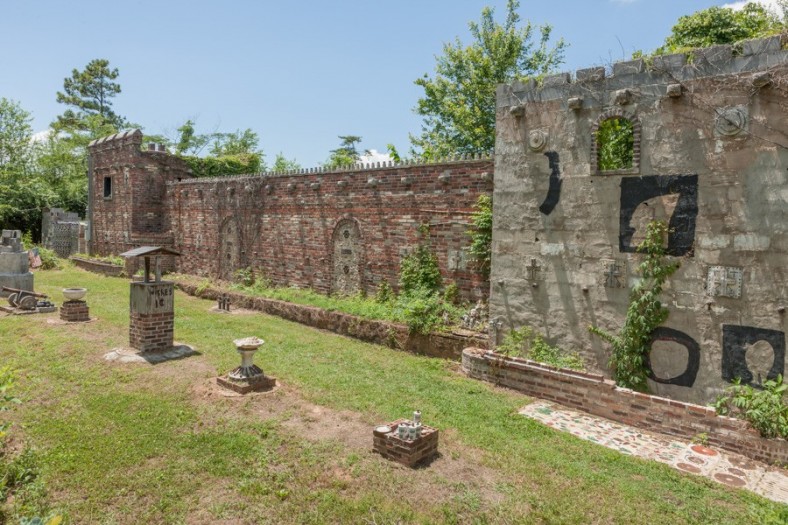
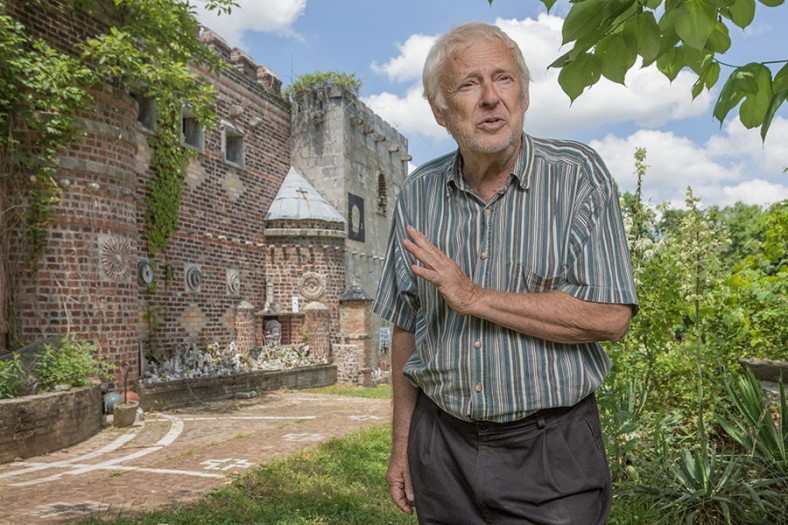
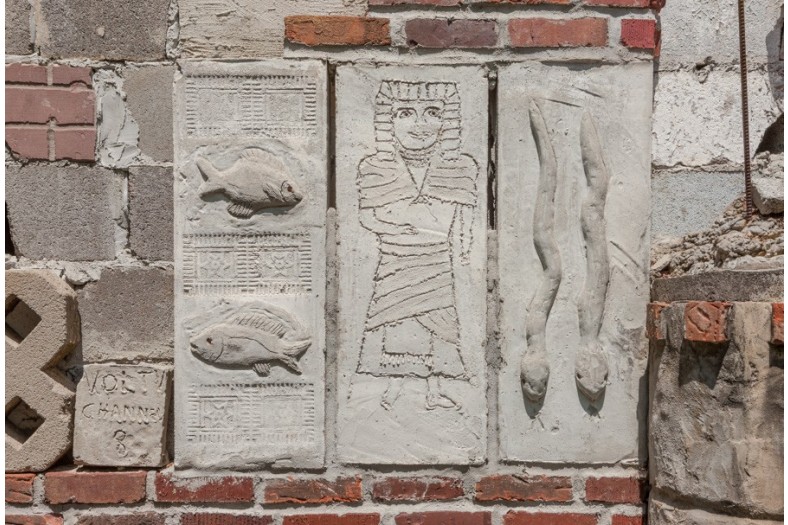
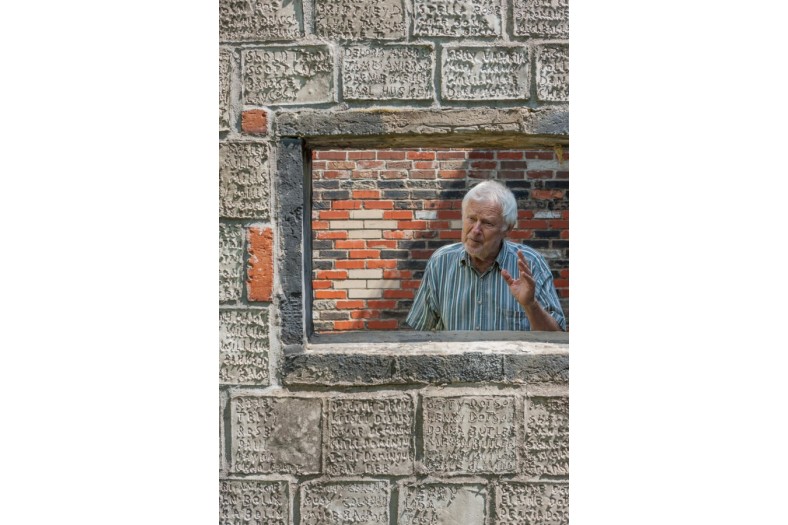


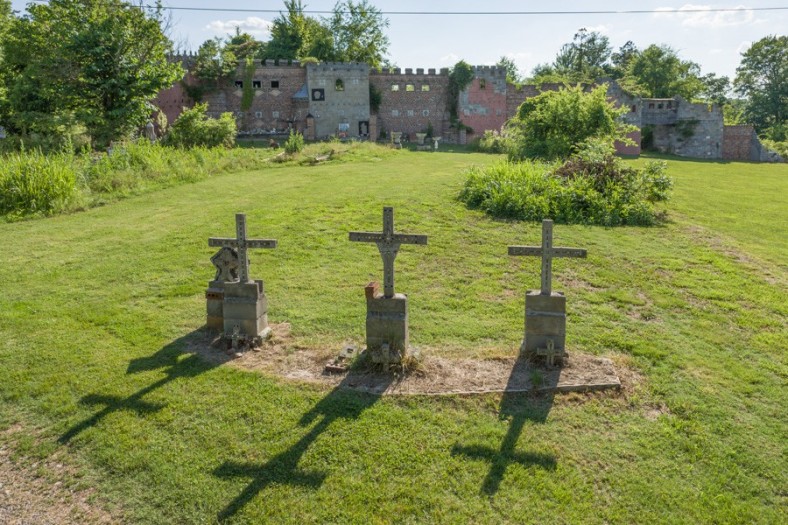


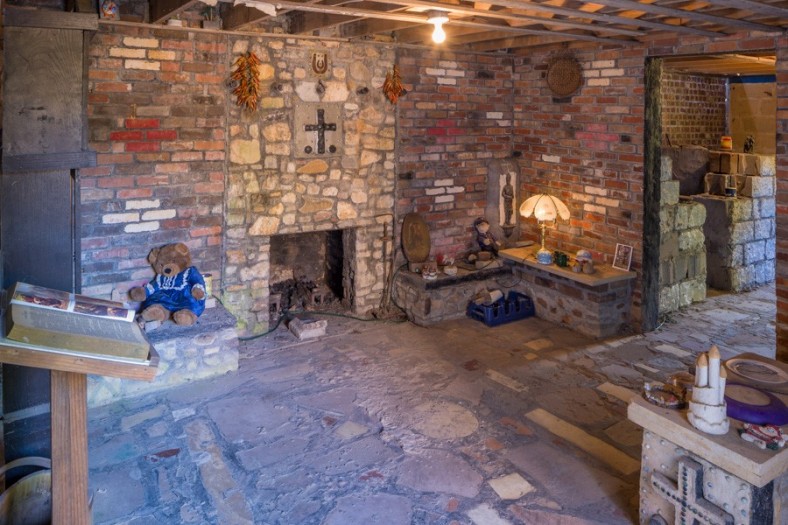

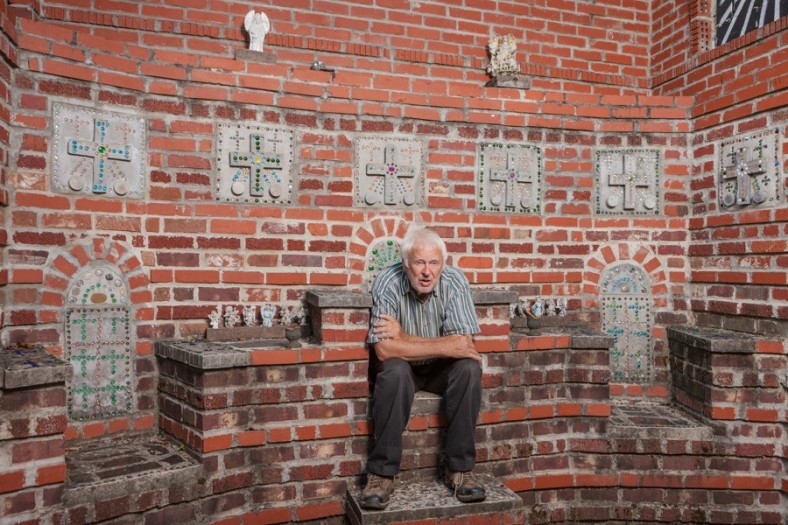


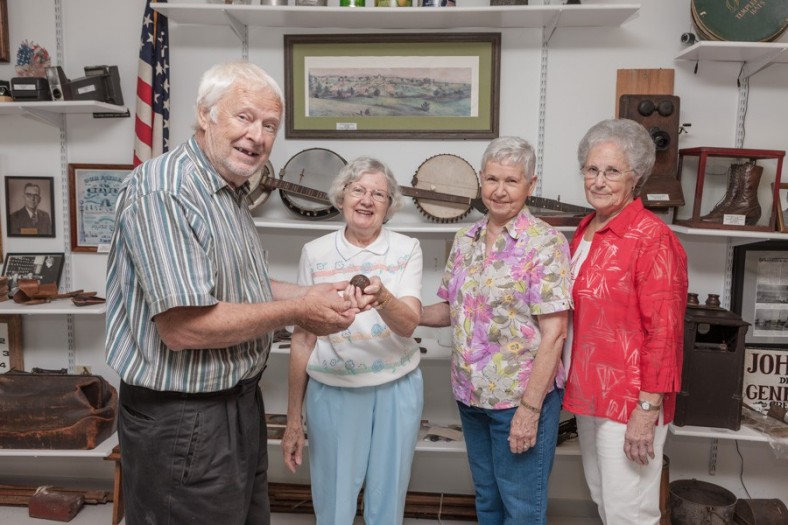




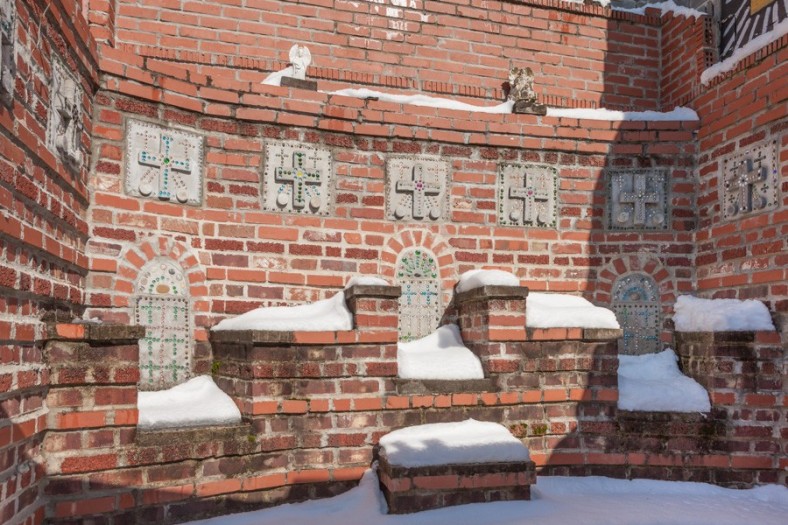

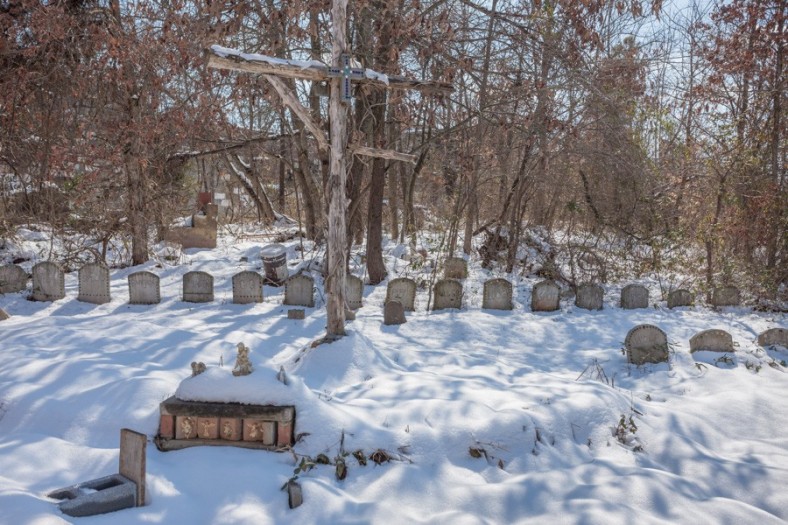
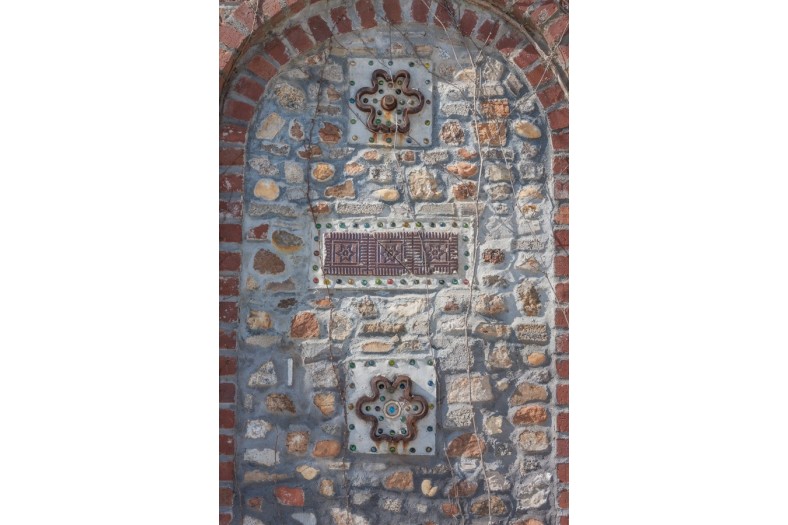

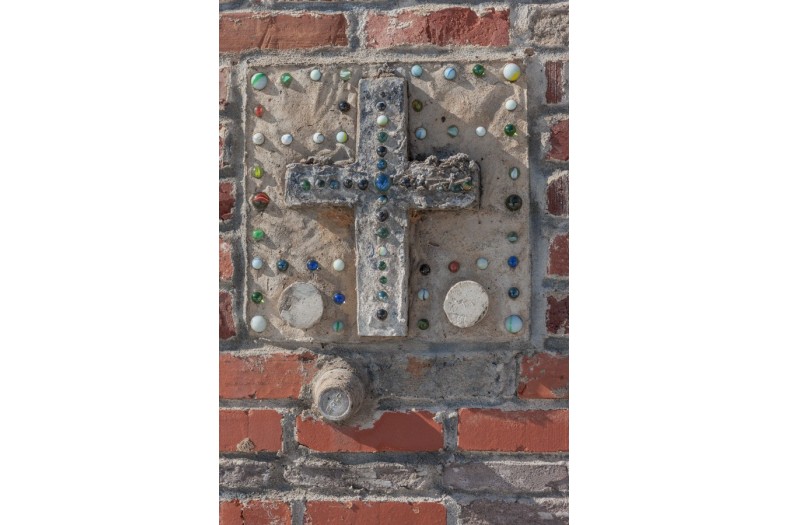


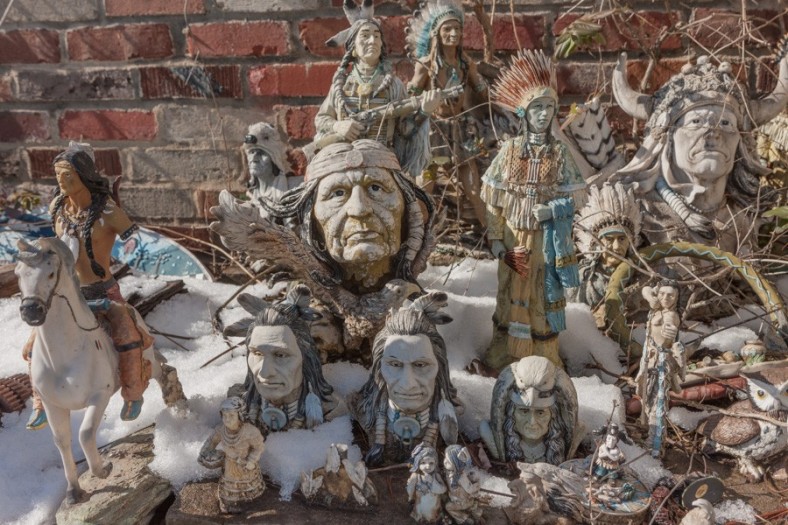


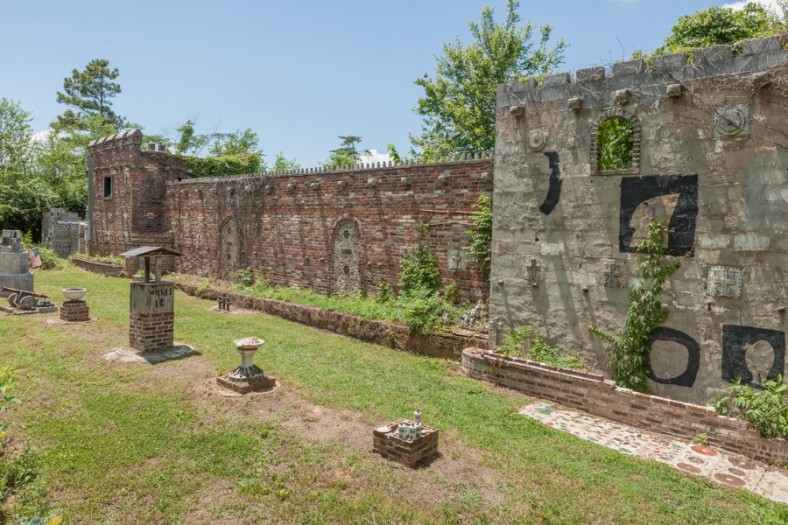











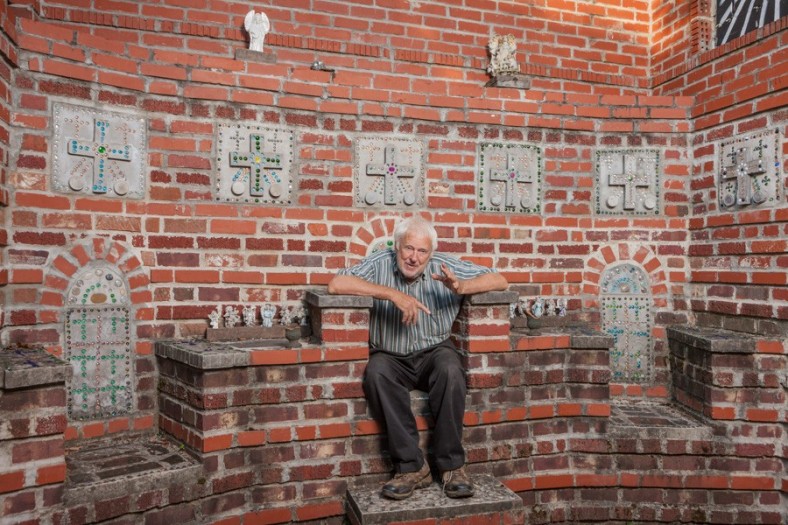
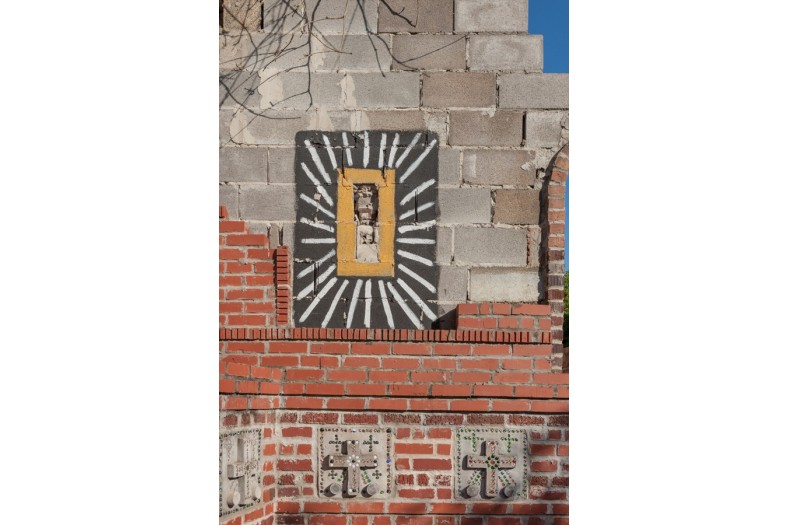

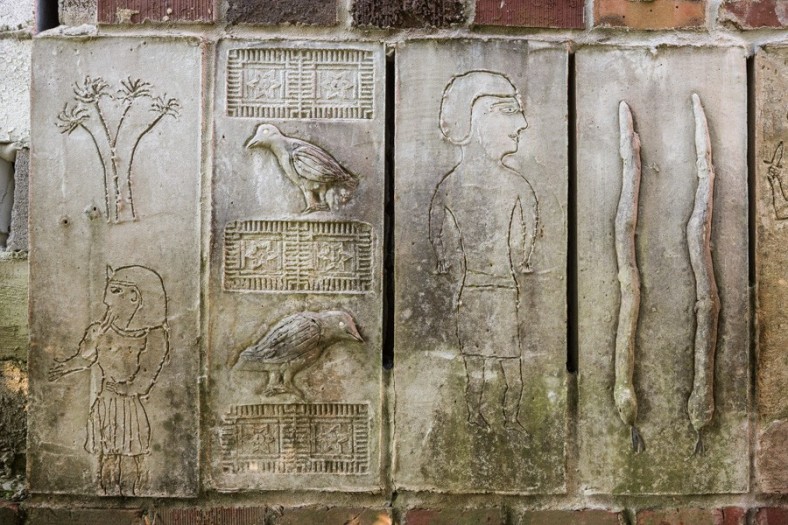

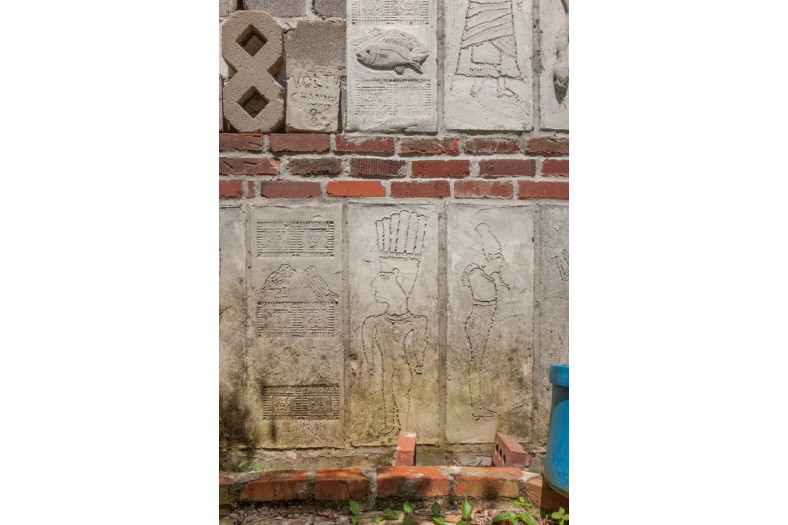

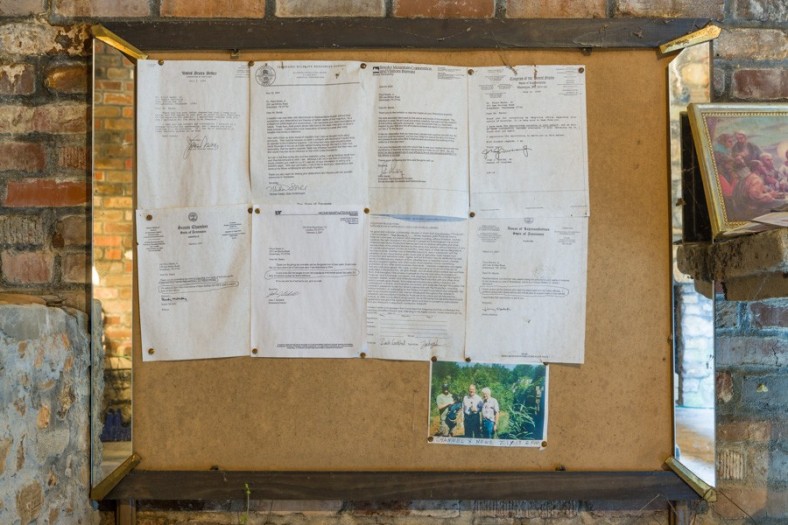
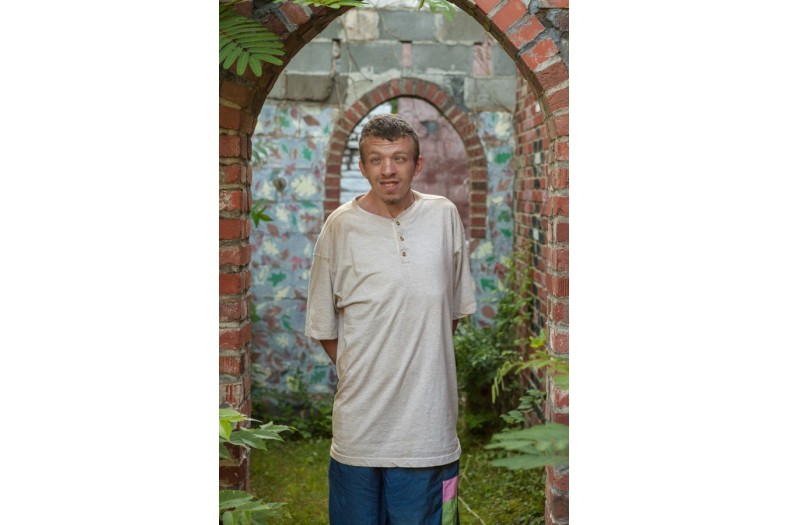

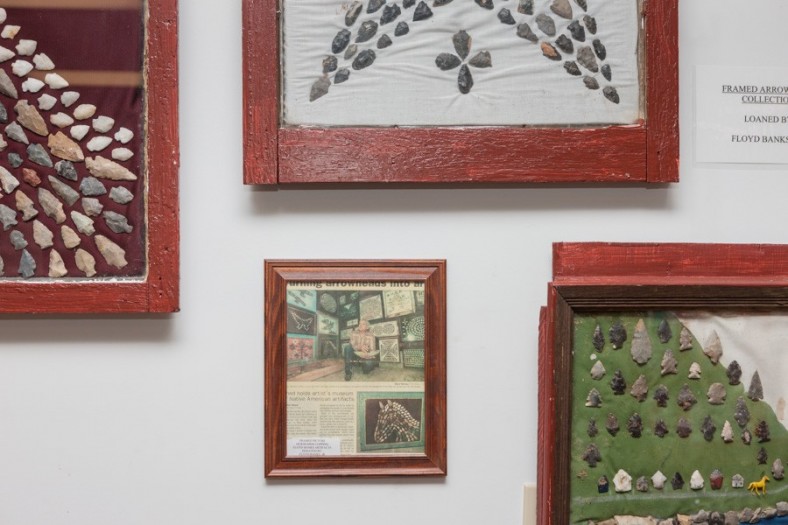

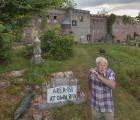

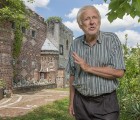




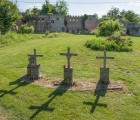

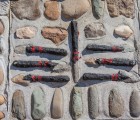
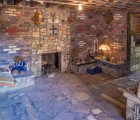
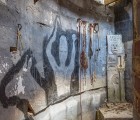
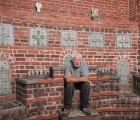
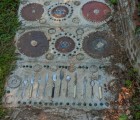

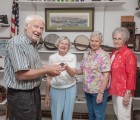
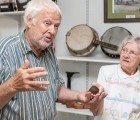


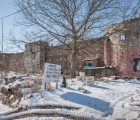
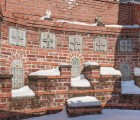
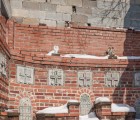



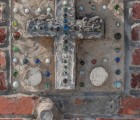
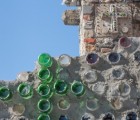



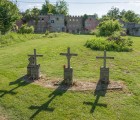
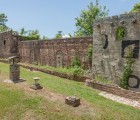

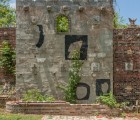


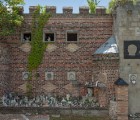

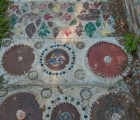
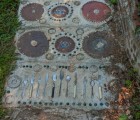

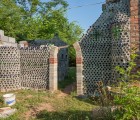
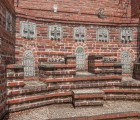


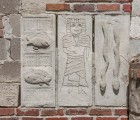
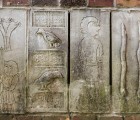







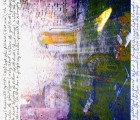




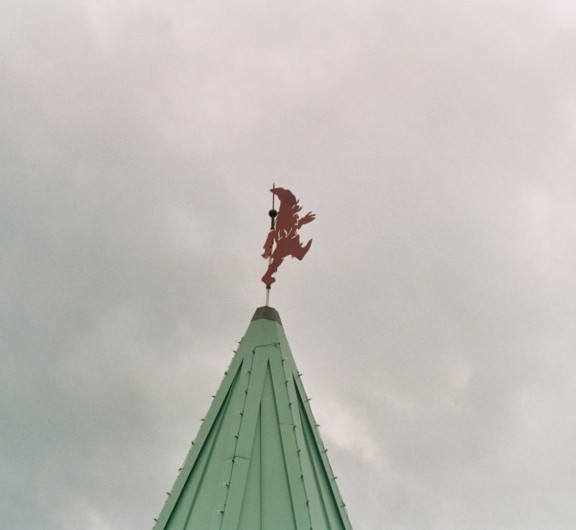
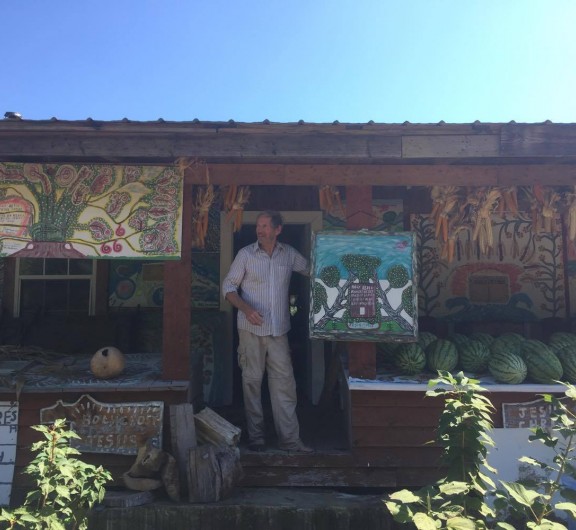

Post your comment
Comments
Steven November 5, 2024
That wasn't the only attempt to stop him from building. I believe this guy was a part of a cult or his land was built on something that is far beyond our wildest imagination. On September 29th 2024 I visited greenback Castle and went into a school bus on his property knowing that something wasn't right with me. The school bus was eerie but whenever I came out of the school bus we decided to go inside and everyone disappeared but me. I prayed to this wall that had some kind of gyms or marbles or something and I started speaking in tongues and I remember while I was speaking in tongues there were people out in the cornfield and they were wearing red cloaks and was by a really round tree. I freaked out went outside as the old man didn't even try calling the police on me nor did he try getting me off of his property but instead whenever I went outside I had no shirt on and he was showing my girlfriend (at the time) daughter and her daughter's fiance a magic trick with cards. Something was off with it and I went over and took the cards from the old man. He had two pairs of cards laid out showing you them this trick and I was in some trance. Whenever I took the cards from him he said "young man you need to put those back" and then came what I will never forget in my whole life. As soon as I put the cards back and told everyone let's go while I was freaking out, I looked into the eyes of my girlfriend's daughter and her fiance and their eyes became pitch Black and started yelling at me like a demon! I intern started throwing bricks at the owner and literally could have killed him and then I picked up a big boulder cinder block and threw it with amazing strength (that I have on video) which almost hit him in the head while he was on the ground. And out of this I got 8 years probation which I will have to do at 100%. Just because of what happened that night. If you want proof of the video or videos and everything that happened at night I will send it to you directly. Let me know. I want this to be heard because I feel like it needs to be heard